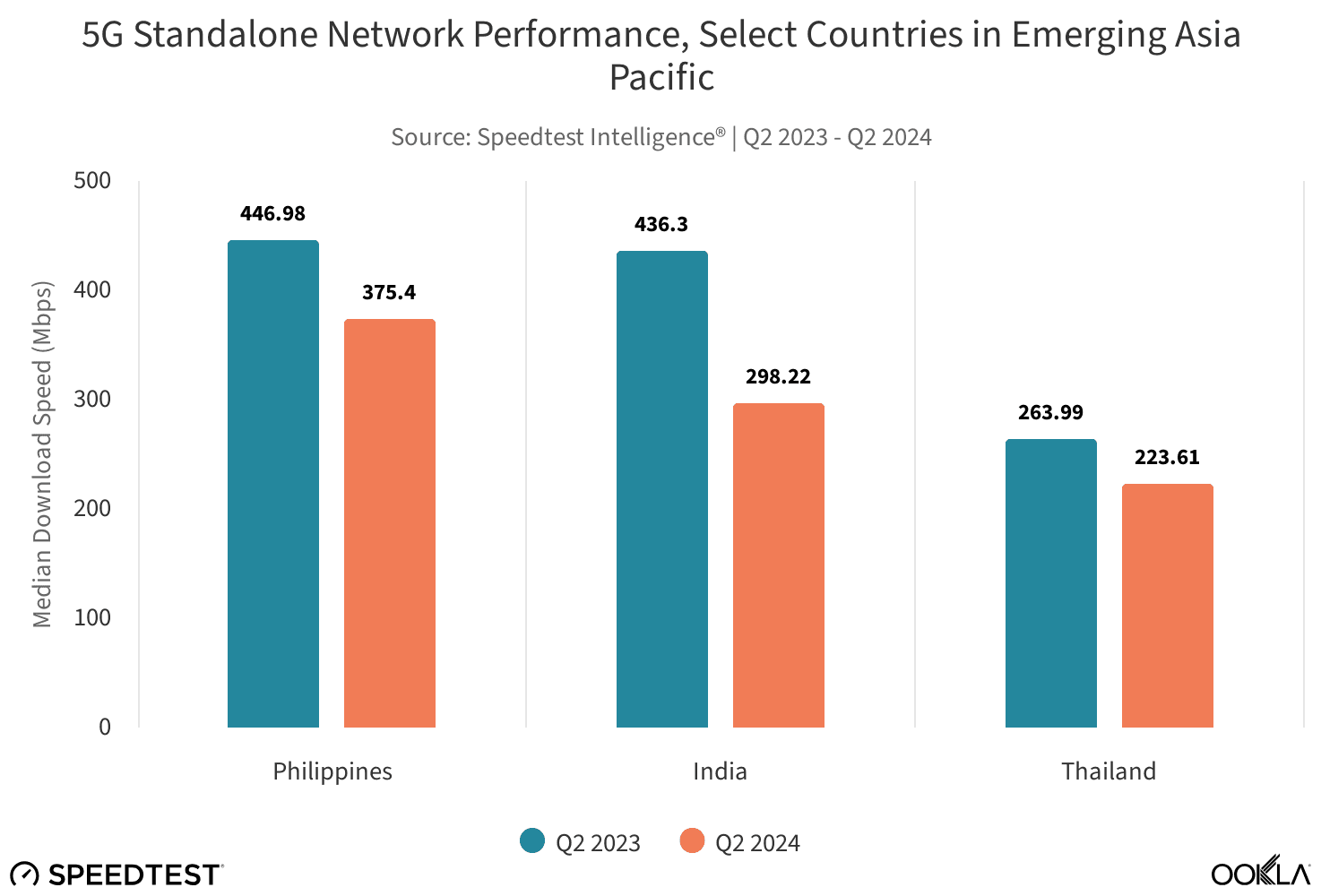Philippines leads in 5G SA download speed, says Ookla report
Globe, Smart, and DITO drive rapid adoption of 5G Standalone networks, enhancing digital connectivity and infrastructure
At A Glance
- The Philippines is advancing in the deployment of 5G SA networks, offering significant improvements in connectivity.
- Globe, Smart, and DITO are the key players in this technological shift, each contributing to the expansion and enhancement of 5G infrastructure.
- Globe Telecom has reached 97.44% 5G outdoor coverage in Metro Manila and initiated 5G SA network deployment.
- Smart Communications is expanding its 5G footprint, focusing on a smooth transition from NSA to SA.
- As the newest market entrant, DITO is building a strong 5G SA network from scratch, emphasizing superior speed and low latency.

The deployment of 5G Standalone (SA) networks in the Philippines is advancing as demand for faster and more reliable connectivity increases. This development marks a significant milestone in the country's telecommunications infrastructure, offering lower latency, increased bandwidth, and improved reliability over previous generations.
Globe, Smart, and DITO leading the charge
Three telecom operators in the Philippines—Globe, Smart, and DITO—are at the forefront of this technological shift. Globe Telecom, the first to introduce 5G Non-Standalone (NSA) in the country, has significantly expanded its 5G outdoor coverage. By the end of the first half of 2023, Globe had achieved 97.44% 5G outdoor coverage in Metro Manila. The company has also initiated the deployment of 5G SA networks, enhancing customer experience and supporting enterprise solutions, including private networks and network slicing.
Smart Communications has been aggressively rolling out its 5G infrastructure. The company leverages its existing network assets to transition smoothly from NSA to SA. Smart's strategy includes expanding its 5G footprint nationwide, ensuring that urban and rural areas benefit from enhanced connectivity.
DITO Telecommunity, the newest entrant in the Philippine telecom market, has also made significant strides in 5G deployment. DITO has been innovative, focusing on building a robust 5G SA network from the ground up. The company aims to differentiate itself by offering superior speed and low latency, catering to consumer and enterprise markets.
Impact on network performance and user experience
According to Ookla's Speedtest Intelligence data, the median 5G SA download speed in the Philippines reached 375.40 Mbps as of Q2 2024. This places the country ahead of regional peers like India and Thailand in terms of download speed. The rollout of 5G SA networks is expected to significantly enhance user experience, providing faster data speeds, lower latency, and more reliable connections.
However, the transition from NSA to SA is challenging. The complexity of infrastructure, substantial investment requirements, and the need for staff training are significant hurdles. Nonetheless, the benefits of 5G SA, including network slicing and cloud-native architectures, promise to unlock new revenue streams and service opportunities for telecom operators.
Global context and future prospects
Globally, 5G SA deployments have gained momentum, particularly in Southeast Asia and the Americas. The pace of 5G SA adoption in the Philippines is expected to accelerate as the ecosystem matures. The increasing availability of 5G SA-compatible devices and the growing demand for advanced applications such as virtual reality and cloud gaming are vital drivers.
The Global Mobile Suppliers Association (GSA) reported that 230 operators worldwide had invested in public 5G SA networks as of June 2024. While the Philippines is making notable progress, the overall global adoption of 5G SA remains mixed. Some regions, like Europe, are still hesitant, largely due to the unclear business cases and the significant investment required.
The Philippines stands out as a regional leader in 5G SA deployment, thanks to the concerted efforts of Globe, Smart, and DITO. As these operators continue to expand their 5G SA networks, consumers and businesses in the Philippines can look forward to a new era of connectivity. The ongoing developments in the 5G landscape are set to transform the telecommunications industry and various sectors, including healthcare, manufacturing, and entertainment.
The future of 5G SA in the Philippines is promising, with operators poised to capitalize on new technologies and market opportunities. As the ecosystem evolves, the country is well-positioned to reap the benefits of a fully realized 5G network, contributing to its digital transformation and economic growth.